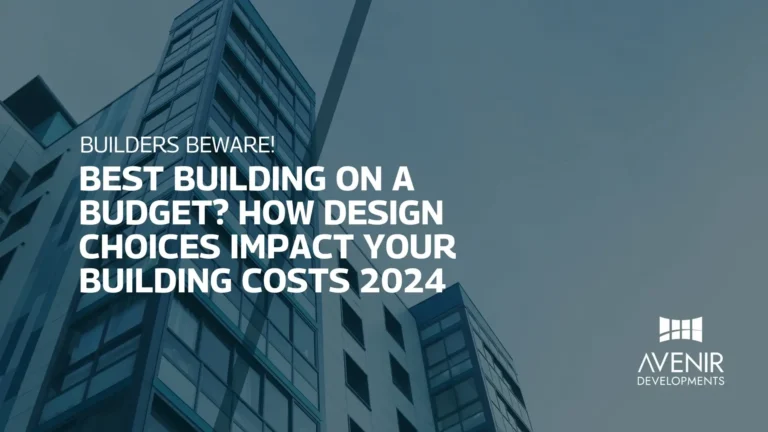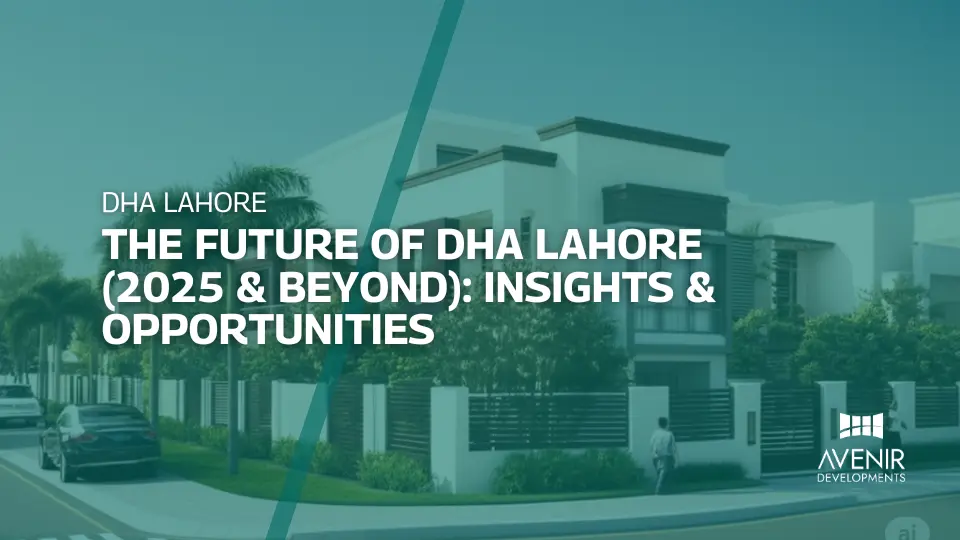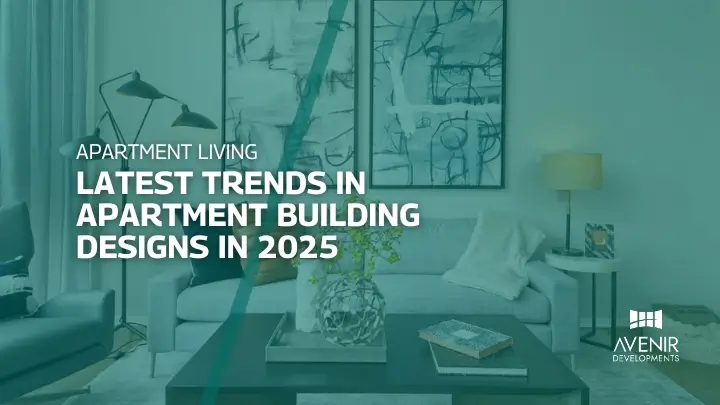Building your dream home can be an incredibly exciting time in your life. However, the initial thrill can quickly turn into a stressful ordeal if you haven’t carefully considered the building costs. Even in Pakistan, where construction costs tend to be lower than in many Western countries, building a house can be a significant financial investment.
In my travels and work around the world, I’ve seen countless aspiring homeowners get caught off guard by unexpected costs. This is especially true for those who haven’t considered how their design choices can significantly impact the overall building cost. The good news is that with careful planning and some smart design decisions, you can still achieve your dream home without breaking the bank.

This blog post will equip you with the knowledge you need to make informed choices throughout the design and construction process. We’ll explore the various factors that influence building costs, discuss the latest trends in budget-friendly construction in Pakistan and around the world, and provide you with practical tips to stay on budget. By the end of this article, you’ll be well on your way to building your dream home without sacrificing your financial well-being.
Building your dream space, whether a home, shed, or office, is exciting! But keeping that dream grounded in reality requires smart planning, especially when it comes to budget. Here’s how your design choices in 2024 can significantly impact your building costs:
Size Matters:
- Square Footage is King: It might seem obvious, but the overall size of your building is the biggest budget influencer. Opting for a smaller footprint can save tens of thousands of dollars on materials and labor. Consider if a multi-level design can maximize space efficiently.
Shape Up for Savings:
- Simple Shapes Save: Complex designs with a lot of angles, curves, or bay windows require more intricate framing and materials, driving up costs. Sticking to a simpler, rectangular or square shape is a budget-friendly approach.
Material Marvels:
- Prioritize Value: While high-end materials might be tempting, explore cost-effective alternatives that offer similar aesthetics and functionality. Consider engineered lumber for walls instead of solid wood, or composite materials for features like countertops.
- Think Long-Term: Though upfront costs might be higher, some materials can save you money in the long run. Energy-efficient windows and insulation can significantly reduce your utility bills.
Smarter Design, Smoother Build:
- Open Floor Plans: Opting for an open floor plan can streamline construction by minimizing the need for interior walls. This can also create a more spacious feel.
- Prefabrication Power: Pre-fab components like roof trusses or wall panels can save on labor costs and construction time, leading to overall budget savings.
Beyond the Blueprint:
- DIY vs. Pro: While DIY can be tempting, certain aspects like foundation work or electrical wiring are best left to professionals. Factor in potential mistakes and delays when considering DIY projects.
- Get Multiple Bids: Don’t settle for the first quote! Get estimates from several qualified contractors to compare pricing and ensure you’re getting the best value.
Remember, a beautiful and functional building can be budget-friendly with careful planning and smart design choices. By prioritizing needs over wants, exploring cost-effective materials, and considering a simpler design, you can turn your dream building into a reality in 2024!
Analyze Building Costs
Before we delve into the exciting world of budget-friendly design choices, let’s establish a solid foundation by understanding what exactly we mean by “building costs.” Building costs encompass all the financial outlays associated with bringing your dream home from concept to completion. Here’s a breakdown of the key components:
- Land Acquisition: This includes the cost of purchasing the land on which you plan to build. Land prices can vary significantly depending on location, size, and existing development. In Pakistan, land prices tend to be higher in major cities like Lahore and Islamabad compared to rural areas.
- Hard Costs: These are the direct costs associated with the physical construction of your home. This includes materials like bricks, cement, wood, roofing, and windows, as well as labor costs for workers like masons, carpenters, electricians, and plumbers.
- Soft Costs: These are the indirect costs associated with the design and planning of your project. This includes architectural and engineering fees, building permits, inspections, and any contingency funds you set aside for unforeseen expenses.
Understanding this breakdown is crucial because it allows you to see where you have the most control over your budget. While land acquisition costs are often fixed, you can significantly influence the hard and soft costs through your design choices. In the following sections, we’ll explore how to make strategic design decisions to keep your building costs under control.
Here are some additional factors that can influence building costs:
- Size and Complexity of Design: Larger homes with intricate layouts and features naturally cost more to build. Opting for a simpler, more compact design can lead to significant savings on materials and labor.
- Choice of Materials: High-end finishes and imported materials will inflate your budget compared to locally sourced, cost-effective alternatives.
- Energy Efficiency: While incorporating energy-efficient features like solar panels or insulated walls may require an upfront investment, they can lead to significant cost savings on your utility bills in the long run.
- Labor Rates: Labor costs can vary depending on the skill level of the workers you hire and the prevailing market rates in your area.
By understanding these various cost components and their influencing factors, you’ll be better equipped to make informed decisions throughout the design and construction process.
Trending Topics: Budget-Friendly Building in Pakistan and Beyond
The world of construction is constantly evolving, and Pakistan is no exception. Here, we’ll explore some of the latest trends that are making building on a budget more achievable for homeowners:
Locally Sourced and Sustainable Materials:
A growing focus on sustainability is driving a surge in the use of locally sourced, eco-friendly building materials. This trend not only benefits the environment, but it can also lead to significant cost savings. For example, using locally fired bricks instead of imported alternatives can significantly reduce transportation costs. Additionally, utilizing recycled materials like reclaimed wood or salvaged bricks can add a unique aesthetic to your home while keeping costs down.
Prefabricated Construction:
Prefabricated construction, also known as prefab, is a method where key components of your home are built off-site in a controlled environment. These prefabricated sections are then transported to the building site and assembled. Prefab construction offers several advantages that contribute to budget-friendly building:
- Reduced Labor Costs: Prefabrication streamlines the construction process, minimizing the need for on-site labor.
- Improved Efficiency: Building components are constructed in a controlled environment, leading to less waste and a faster build time.
- Enhanced Quality: Prefabricated components are built under controlled conditions, often resulting in higher quality construction compared to traditional on-site methods.
Modular Homes:
Modular homes are prefabricated homes that are built in sections in a factory setting and then transported to the building site for assembly. This method offers several advantages for budget-conscious homeowners:
- Faster Construction: Modular homes can be built and assembled much faster than traditional homes, leading to reduced construction costs.
- Fixed Costs: The modular construction process allows for clear cost estimates upfront, minimizing the risk of unexpected expenses during construction.
- Variety of Designs: Modular homes are no longer limited to basic boxy shapes. Today, a wide variety of styles and layouts are available to suit your taste and budget.
Government Initiatives:
The Pakistani government has implemented several initiatives in recent years aimed at promoting affordable housing. These initiatives include:
- Subsidized Housing Loans: Several government-backed programs offer subsidized loans to help low- and middle-income families afford homeownership.
- Tax Incentives: Tax breaks and exemptions are available for developers who construct affordable housing units.
- Simplified Permitting Process: The government has streamlined the building permit process to reduce bureaucratic hurdles and expedite construction timelines.
By staying informed about these trends and initiatives, you can leverage them to make informed decisions and build your dream home within your budget.
Here are some additional resources for staying up-to-date on the latest trends in budget-friendly building:
- The National Housing Authority (NHA) of Pakistan: https://nha.gov.pk/
- The Aga Khan Development Network (AKDN): https://the.akdn/en/home (AKDN focuses on sustainable development projects, including affordable housing initiatives)
- Green Building Council of Pakistan (GBCP): https://pakistangbc.org/ (promotes sustainable building practices)
By incorporating these trends and resources into your planning process, you can unlock new possibilities for building your dream home without sacrificing your financial goals.
Building on a Budget: Your Questions Answered
Q: Can I build a house on a budget in Pakistan?
Absolutely! While building costs can vary depending on location, materials, and design complexity, there are many strategies you can employ to build a beautiful and functional home within your budget. This blog post has explored several key strategies, including:
- Understanding building cost components and influencing factors.
- Making smart design choices that prioritize simplicity and functionality.
- Utilizing locally sourced and sustainable materials.
- Exploring innovative construction methods like prefab and modular housing.
- Taking advantage of government initiatives promoting affordable housing.
By carefully planning your project and incorporating these strategies, you can significantly reduce your building costs and achieve your dream of homeownership.
Q: What are some budget-friendly building materials I can consider in Pakistan?
Here are some readily available and cost-effective building materials to consider for your project:
- Locally fired bricks: A cost-effective and durable alternative to imported varieties.
- Concrete blocks: Offer a faster construction process compared to bricks and can be a good option for load-bearing walls.
- Clay tiles: A traditional and affordable roofing material with good heat insulation properties.
- Locally sourced wood: Sustainable and cost-effective for elements like doors, window frames, and interior finishes.
- Recycled materials: Salvaged wood, bricks, or other materials can add unique character and reduce costs.
Q: How can I create a building cost checklist for my project?
A building cost checklist is a valuable tool for staying on track with your budget. Here’s a basic framework to get you started:
- Land Acquisition: Include the cost of the land purchase.
- Hard Costs:
- List all major building materials (bricks, cement, wood, roofing, etc.) with estimated quantities and costs.
- Factor in labor costs for skilled workers like masons, carpenters, electricians, and plumbers.
- Include costs for permits, inspections, and waste disposal.
- Soft Costs:
- Include architectural and engineering fees.
- Factor in contingency funds for unforeseen expenses.
Remember: This is just a starting point. You can customize your checklist to include additional cost categories specific to your project. It’s also important to regularly update your checklist with actual costs as you progress through the design and construction process.
By addressing these frequently asked questions and providing practical tools like a building cost checklist, we aim to empower you to navigate the building process with confidence and stay on budget.
Expert Tips for Building on a Budget in Pakistan
Having spent over two decades designing and building homes in Pakistan and around the world, I’ve accumulated a wealth of knowledge on how to navigate the construction process while staying financially responsible. Here are some of my hard-earned tips to help you build your dream home on a budget:
- Plan Before You Build: The planning stage is crucial for keeping costs under control. Invest time in developing a detailed design plan that outlines your needs, budget, and desired features. A clear plan helps avoid costly changes during construction.
- Embrace Simplicity: Complex designs with intricate layouts and features can significantly inflate your budget. Opt for a simpler, more functional design that prioritizes space optimization and natural light. Remember, a well-designed home doesn’t have to be extravagant to be beautiful and comfortable.
- Work with a Reputable Architect: An experienced architect can guide you through the design process with a budget-conscious approach. They can help you choose cost-effective materials and construction methods while still achieving your desired aesthetic. Look for an architect experienced in sustainable design principles, as these can lead to long-term cost savings through energy efficiency.
- Get Multiple Quotes: Don’t settle for the first contractor you meet. Obtain quotes from several reputable construction companies to compare pricing and services offered. Be sure to clearly communicate your budget and design expectations when requesting quotes.
- Consider Alternative Construction Methods: Explore innovative construction methods like prefab or modular housing, which can offer faster build times and potentially lower costs compared to traditional on-site construction.
- Be Open to Compromise: While it’s important to have a clear vision for your dream home, be prepared to make some compromises to stay within your budget. Prioritize your must-have features and be flexible on non-essential elements.
- Manage Your Expectations: Building a home takes time and effort. Set realistic expectations for the construction timeline and potential for unforeseen challenges. Having a clear understanding of the process can help you manage your budget and avoid unnecessary stress.
- Communicate Effectively: Maintain open and clear communication with your architect, contractor, and any other professionals involved in the project. This helps ensure everyone is on the same page and minimizes the risk of misunderstandings that can lead to costly delays or changes.
By following these expert tips and incorporating the strategies outlined in this blog post, you can significantly increase your chances of building your dream home in Pakistan without breaking the bank. Remember, building on a budget doesn’t mean sacrificing quality or functionality. With careful planning, smart design choices, and a collaborative approach, you can achieve a beautiful and comfortable home that aligns with your financial goals.
Conclusion: Building Your Dream Within Reach
Building your dream home is an exciting journey, but navigating the financial aspects can be daunting. However, by understanding how design choices impact building costs, you can make informed decisions throughout the process. This blog post has equipped you with the knowledge and tools you need to embark on your building adventure with confidence.
Recap:
- We explored the various components of building costs, including land acquisition, hard costs, and soft costs.
- We discussed the latest trends in budget-friendly construction, highlighting the benefits of locally sourced materials, prefab construction, and modular housing. We also explored government initiatives promoting affordable housing in Pakistan.
- We addressed frequently asked questions about building on a budget in Pakistan and provided a framework for creating a building cost checklist.
- Finally, we shared valuable expert tips to help you navigate the construction process while staying financially responsible.
Call to Action:
Building your dream home requires a team of experienced professionals who understand your vision and budget constraints. At Avenir Developments, our team of architects, engineers, and construction specialists have a proven track record of designing and building beautiful, functional homes that meet our clients’ needs and financial goals.
Contact Avenir Developments today on WhatsApp or Call +923001101103 to schedule a free consultation and discuss how we can help you transform your dream home into a reality. Together, we can navigate the building process efficiently and ensure your project stays on track financially.
Don’t let financial concerns hold you back from building your dream home. Contact Avenir Developments today and take the first step towards making your dream a reality!
Additional Notes:
- Feel free to replace the phone number with a link to a contact form on the Avenir Developments website.
- You can also include a captivating image showcasing a beautiful, budget-friendly home design built by Avenir Developments.
Read More: House Construction Cost Breakdown: Why is there Mystery Behind Building Costs






